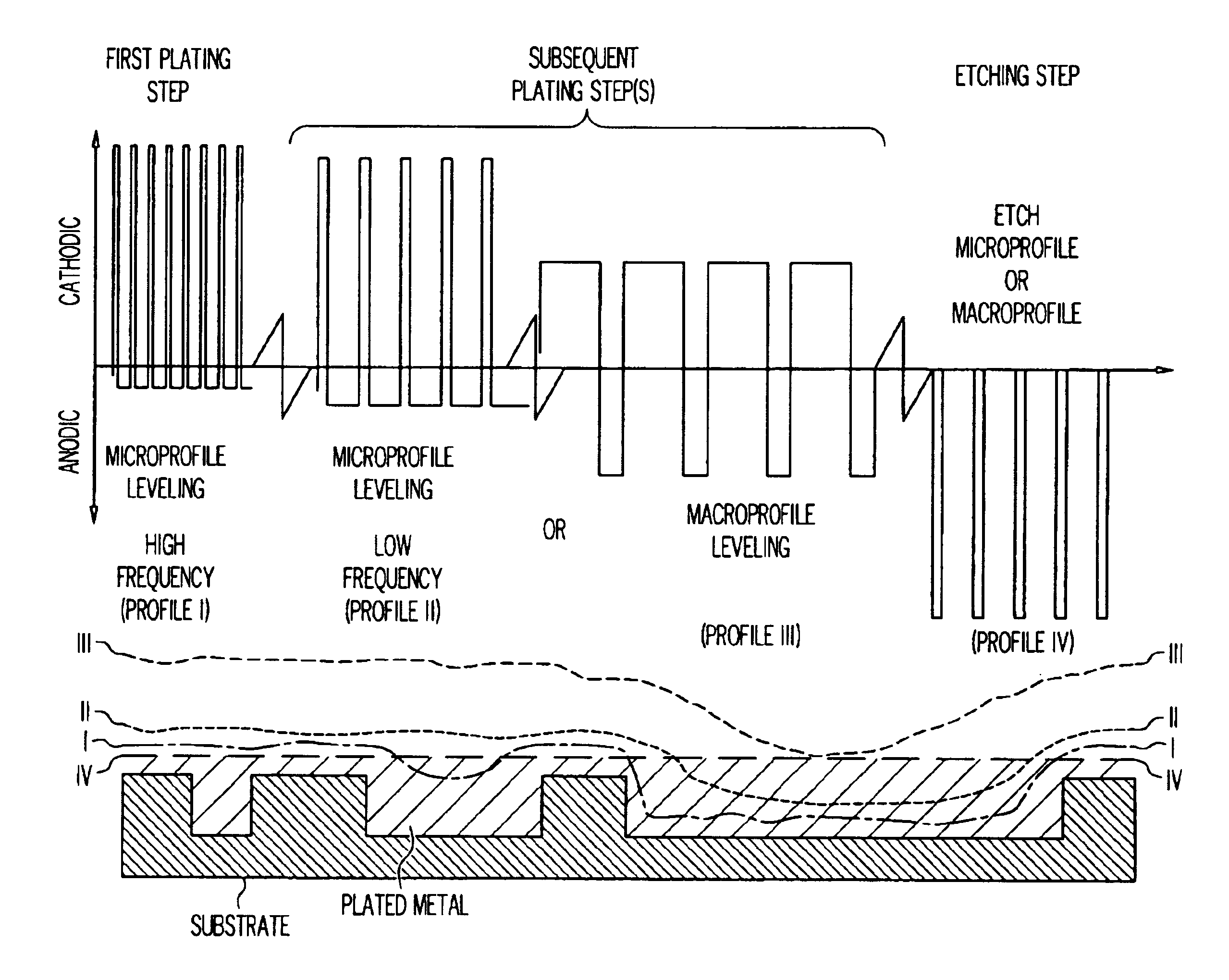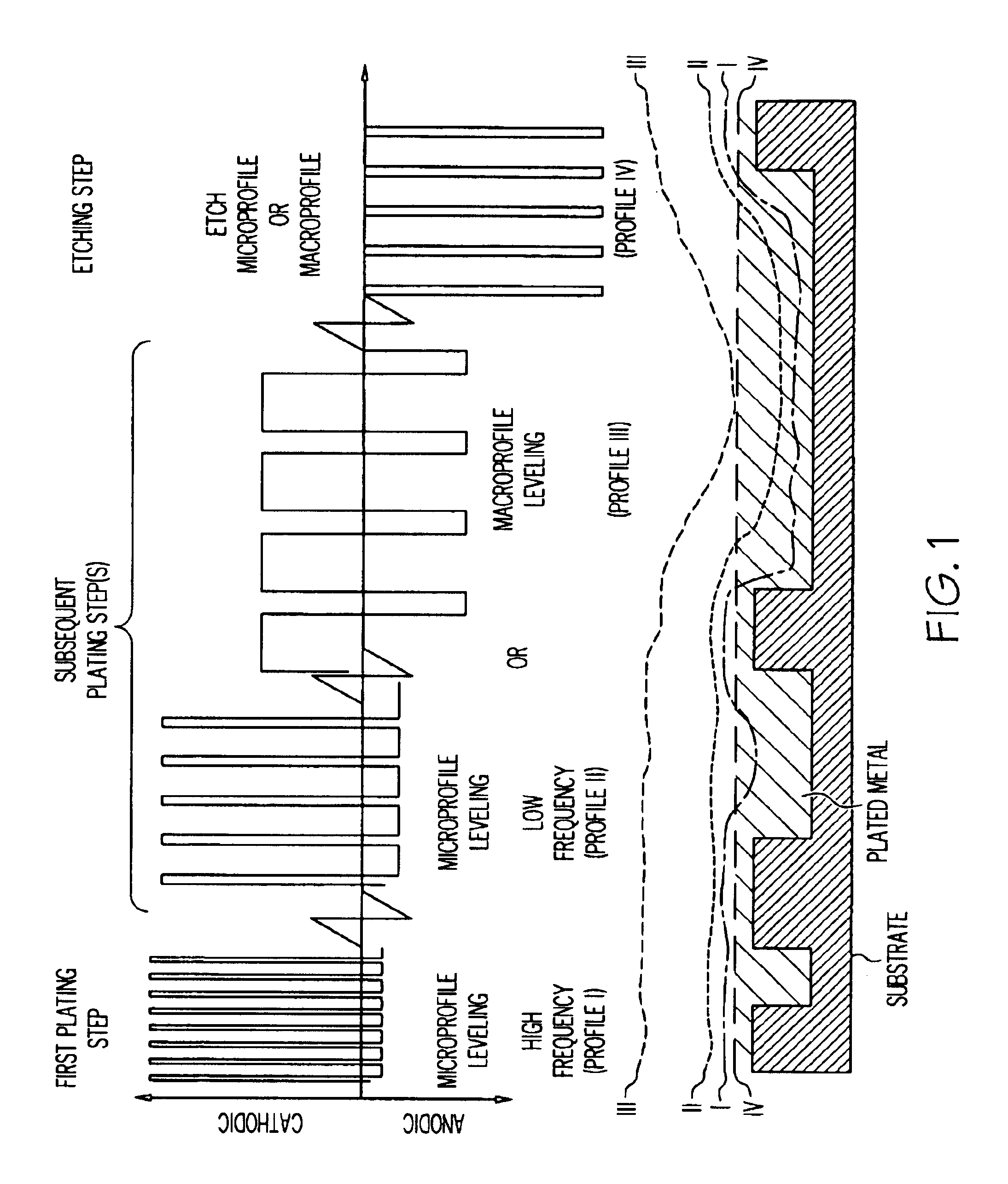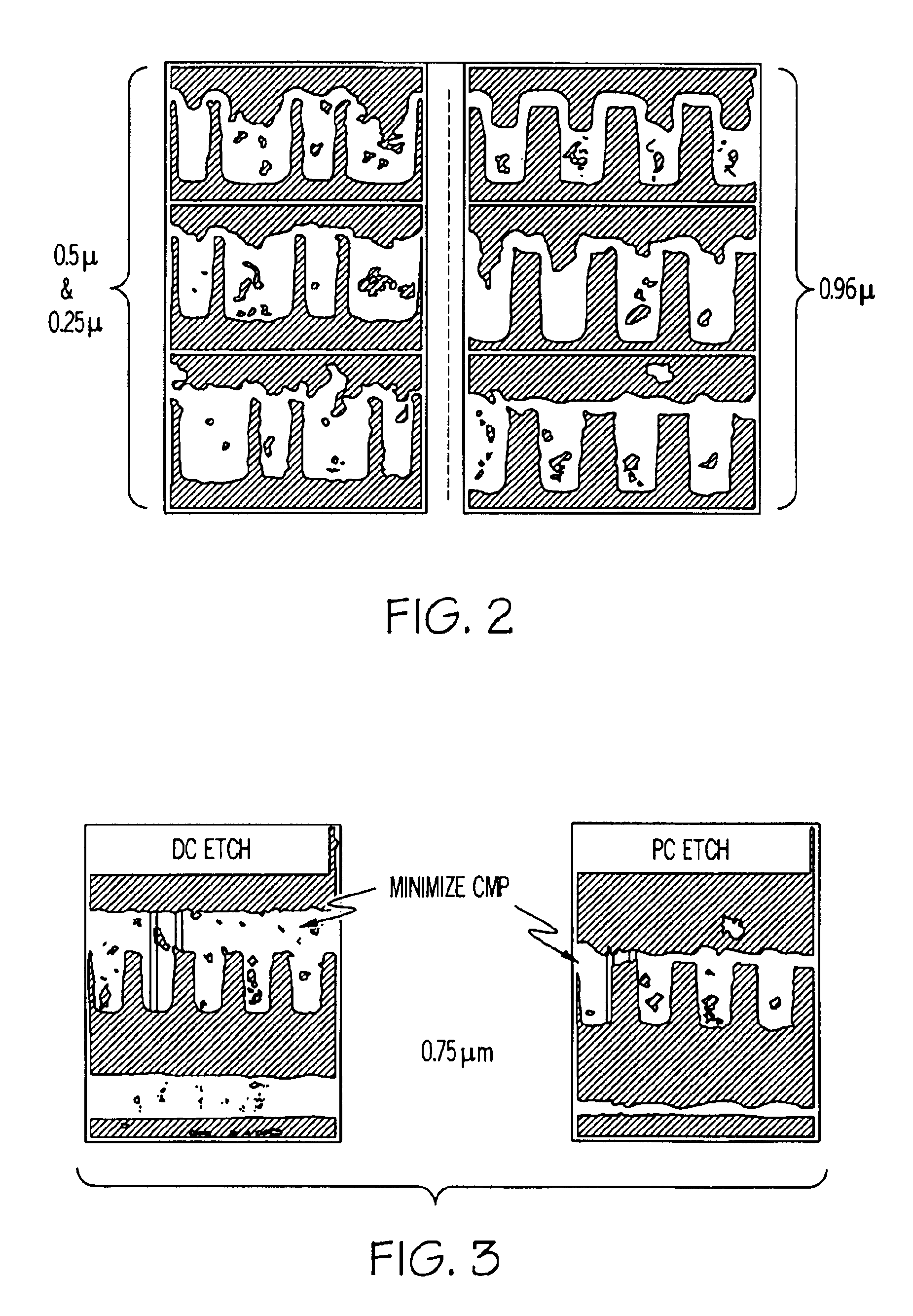Method for electrochemical metallization and planarization of semiconductor substrates having features of different sizes
a technology of semiconductor substrates and features, applied in the direction of electrolytic processes, semiconductor devices, electrolysis components, etc., can solve the problem of difficult to achieve the complete filling of all features on a wafer
- Summary
- Abstract
- Description
- Claims
- Application Information
AI Technical Summary
Benefits of technology
Problems solved by technology
Method used
Image
Examples
example
An acid copper sulfate solution containing 60 g / L CuSO.sub.4, 9% by volume of H.sub.2 SO.sub.4, 60 ppm Cl.sup.-, and 350 ppm PEG was used as the copper electroplating bath for all experiments. The plating bath temperature was 25.degree. C. The plating experiments were conducted on 1.9.times.1.9 cm samples in a rotating electrode apparatus.
FIG. 2 shows metallization of VLSI features on IC's. Excellent, void-free filling for 0.25, 0.5, 0.75 and 1 .mu.m IC features were obtained with minimal overplate, using a waveform sequence consisting of a short forward on-time / long reverse on-time, followed by a short reverse on-time etching step. The reduction in the amount of chemical mechanical planarization (CMP) required in subsequent processing. FIG. 3 shows the reduction in overplate due to the use of electrically mediated pulsed current (PC) etching, as compared to DC etching.
Having described the invention in detail and by reference to particular embodiments thereof, it will be apparent th...
PUM
| Property | Measurement | Unit |
|---|---|---|
| on-time | aaaaa | aaaaa |
| on-time | aaaaa | aaaaa |
| diameter | aaaaa | aaaaa |
Abstract
Description
Claims
Application Information
 Login to View More
Login to View More - R&D
- Intellectual Property
- Life Sciences
- Materials
- Tech Scout
- Unparalleled Data Quality
- Higher Quality Content
- 60% Fewer Hallucinations
Browse by: Latest US Patents, China's latest patents, Technical Efficacy Thesaurus, Application Domain, Technology Topic, Popular Technical Reports.
© 2025 PatSnap. All rights reserved.Legal|Privacy policy|Modern Slavery Act Transparency Statement|Sitemap|About US| Contact US: help@patsnap.com



